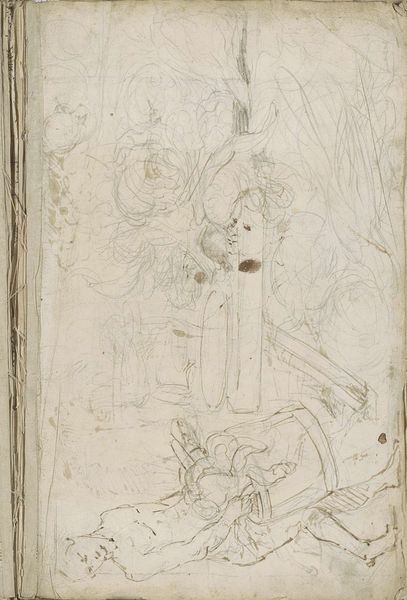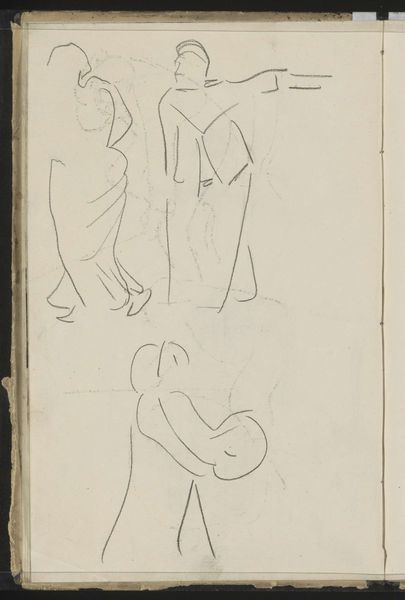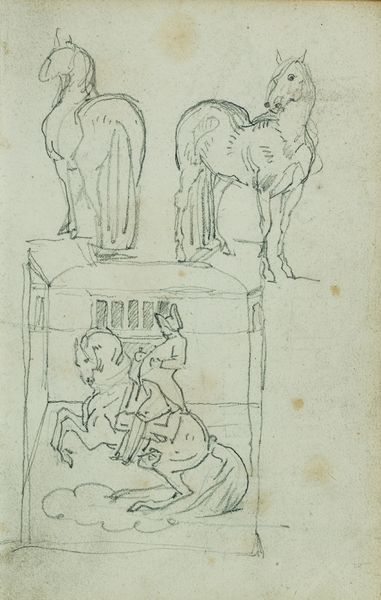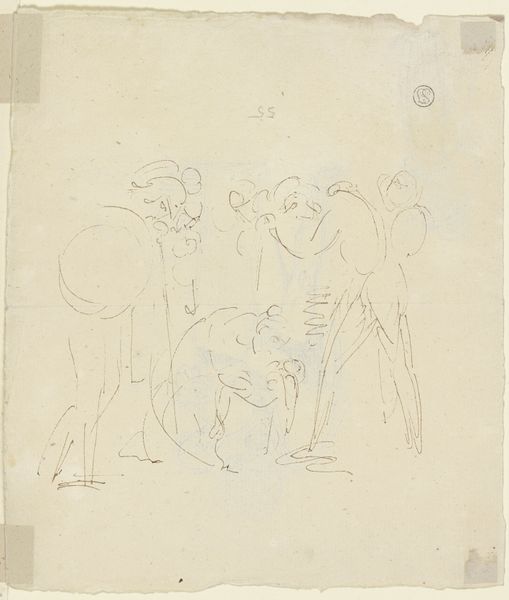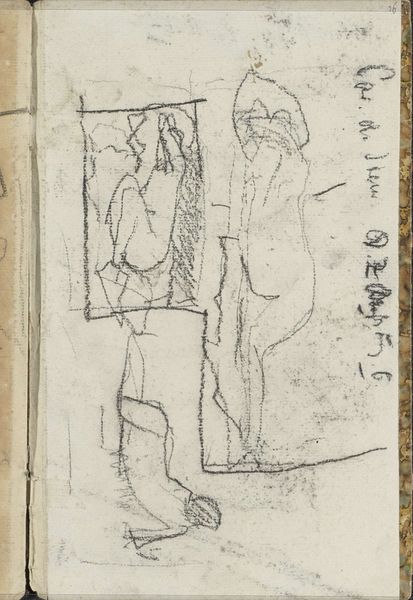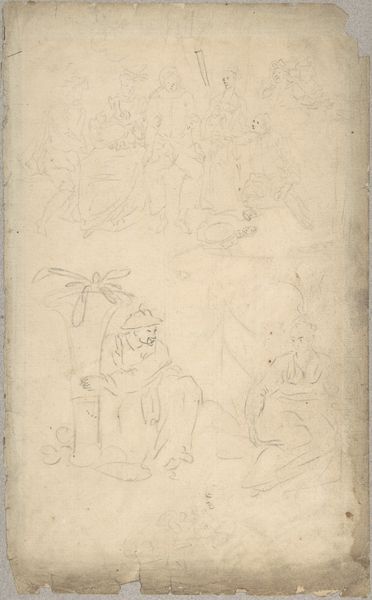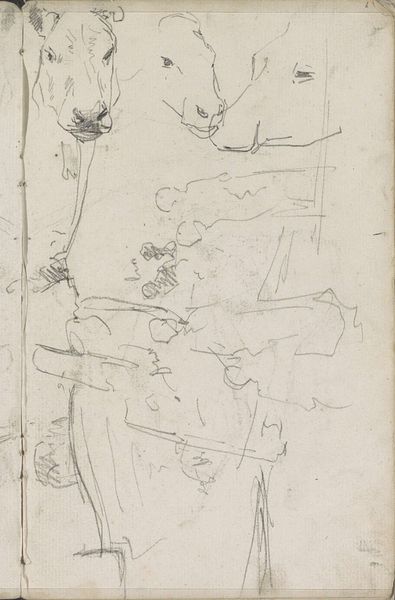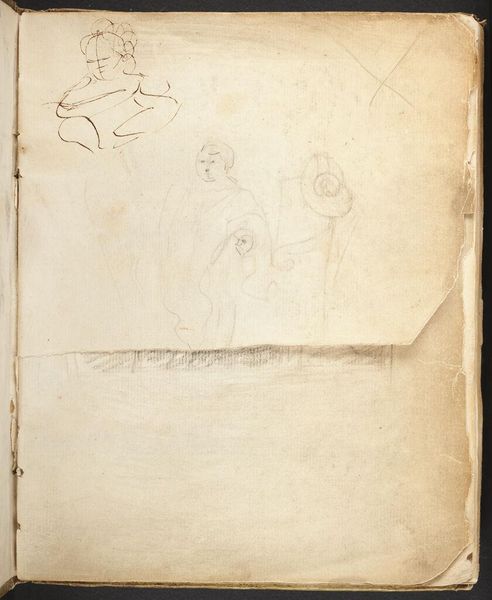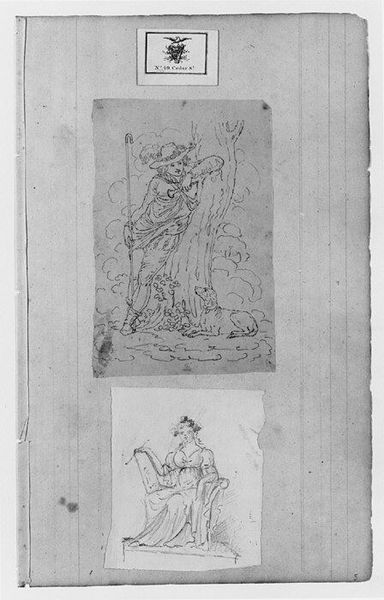
drawing, pencil
#
portrait
#
drawing
#
figuration
#
pencil
#
academic-art
Copyright: Rijks Museum: Open Domain
This drawing of a human pyramid by Carel Adolph Lion Cachet presents us with a fascinating study of figures, each carrying symbolic weight. The pyramid form itself, an ancient symbol of aspiration and the connection between the earthly and the divine, appears throughout history from Egyptian monuments to circus acts. Note, however, how the figures here are not idealized; they seem strained, their expressions ambiguous, evoking a sense of precariousness. The pyramid as a symbol is turned on its head. Consider the motif of the human figure used as a structural element, a living caryatid. This motif has roots in ancient architecture, reappearing in Renaissance art and beyond. The face, often serene, is now contorted, reflecting the psychological burden of supporting the structure. This reflects how the collective unconscious imprints itself on the cultural production, where primal urges intertwine with societal structures. Such enduring symbols remind us that art is not just about what we see, but about what lies beneath.
Comments
No comments
Be the first to comment and join the conversation on the ultimate creative platform.
